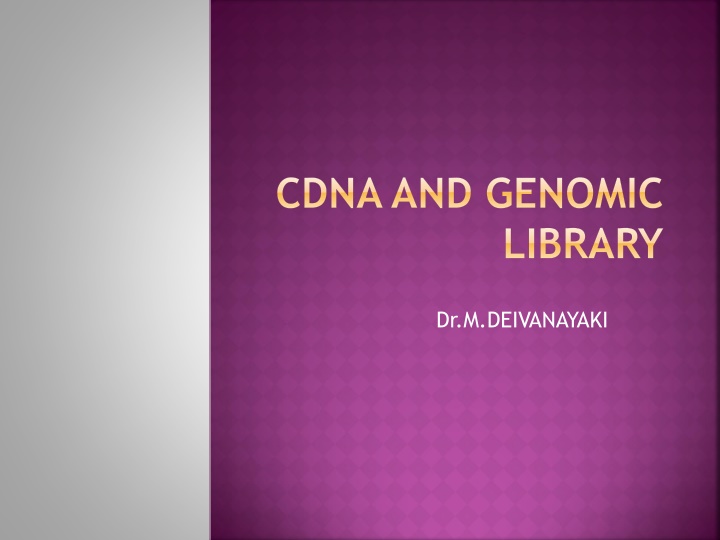
Genomic and cDNA Libraries
Learn about the differences between genomic and cDNA libraries, how they are constructed, their applications, and why cDNA libraries can be expressed in bacteria while genomic libraries cannot. Explore the use of restriction endonucleases, ligases, and reverse transcriptase enzyme in library preparation.
Download Presentation

Please find below an Image/Link to download the presentation.
The content on the website is provided AS IS for your information and personal use only. It may not be sold, licensed, or shared on other websites without obtaining consent from the author. If you encounter any issues during the download, it is possible that the publisher has removed the file from their server.
You are allowed to download the files provided on this website for personal or commercial use, subject to the condition that they are used lawfully. All files are the property of their respective owners.
The content on the website is provided AS IS for your information and personal use only. It may not be sold, licensed, or shared on other websites without obtaining consent from the author.
E N D
Presentation Transcript
CDNA AND GENOMIC LIBRARY Dr.M.DEIVANAYAKI
Genomic Library: 1. Genomic Library is prepared directly from the genomic DNA. 2. Genomic Library represents entire genome of the organism 3.Restriction endonucleases and ligases are important for its construction. 4. They carry introns also. 5. They may represent the DNA of both eukaryotic and prokaryotic organisms. 6. They are not capable of expression in prokaryotes (like the bacteria) because they carry introns and prokaryotes do not have machinery to process introns.
cDNA 1. cDNA Library is prepared by using mRNA as template. 2. cDNA Library represents only those genes of genome which express under specific conditions. 3. Reverse transcriptase enzyme plays an important role in its construction. 4. They lack introns. 5. They represent the DNA of only eukaryotic organisms. 6. They are capable of expression in bacteria because they lack introns.



















